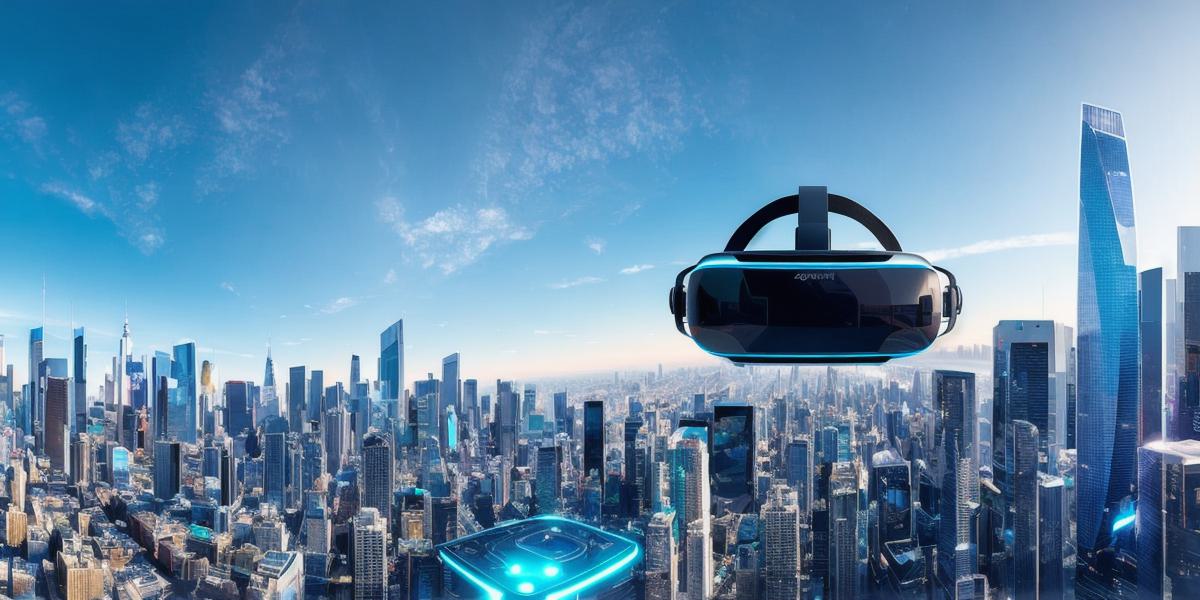Virtual reality (VR) has been around for a few years now, and it’s becoming increasingly popular as technology advances. But what is XR? XR stands for "extended reality," which includes VR, augmented reality (AR), and mixed reality (MR). In this article, we will explore how XR can revolutionize the way we experience reality and what the future holds for this technology.
Virtual Reality
Virtual reality is a computer-generated simulation of a 3D environment that users can interact with using specialized headsets or wearable devices. It’s an immersive experience that can transport users to different worlds and make them feel like they are physically present in those environments. For example, gamers can use VR to explore new games and experience them in a way that was previously impossible.
Augmented Reality
Augmented reality is a technology that overlays digital information onto the real world. It uses cameras and sensors to track the user’s environment and then adds computer-generated elements to it. This can be as simple as adding a virtual arrow to point the user in the right direction or as complex as creating an interactive game that blends the real world with virtual elements. For example, IKEA’s AR app allows users to see how furniture would look in their home before buying it.
Mixed Reality
Mixed reality is a combination of VR and AR. It creates a seamless transition between the real world and virtual environments, allowing users to interact with both at the same time. For example, Microsoft’s HoloLens app allows users to see holographic objects in their real-world environment, which they can interact with using hand gestures.
Case Studies
One of the best ways to understand how XR is being used is by looking at real-world examples. For example, the healthcare industry is using VR and AR to train medical students and doctors. This allows them to simulate surgeries and other procedures in a safe environment, reducing the risk of mistakes and improving patient outcomes. Another example is the construction industry, which uses AR to help builders visualize projects and make changes on the fly. This can save time and money by eliminating the need for physical models.
The Future of XR
The future of XR looks bright, with advancements in technology driving down costs and making it more accessible to a wider range of users. For example, the Oculus Quest 2 is a VR headset that costs just $299 and can be used without a computer. As more people adopt XR, we can expect to see even more innovative uses for this technology.
One area where XR is likely to have a big impact is in education. By using VR and AR, educators can create immersive learning experiences that engage students and make them more motivated to learn. For example, a history class could use VR to take students on a virtual tour of ancient civilizations, or an art class could use AR to let students see how their work would look in different contexts.
Another area where XR is likely to have a big impact is in the workplace. By using VR and AR, employees can simulate complex scenarios and make changes on the fly, reducing the need for physical prototypes and improving efficiency. For example, an architect could use VR to design a building and then use AR to see how it would look in different lighting conditions.
FAQs
Q: What is the difference between VR, AR, and MR?
A: VR creates a completely immersive environment, AR overlays digital information onto the real world, and MR combines both.
Q: How does XR impact the way we experience reality?
A: XR allows users to interact with virtual environments in a way that was previously impossible, creating new opportunities for learning, exploration, and creativity.
Q: What industries are using XR?
A: The healthcare, construction, education, and workplace industries are just a few examples of how XR is being used.
Conclusion
XR is the future of virtual reality, and it has the potential to revolutionize the way we experience reality. From healthcare and construction to education and
